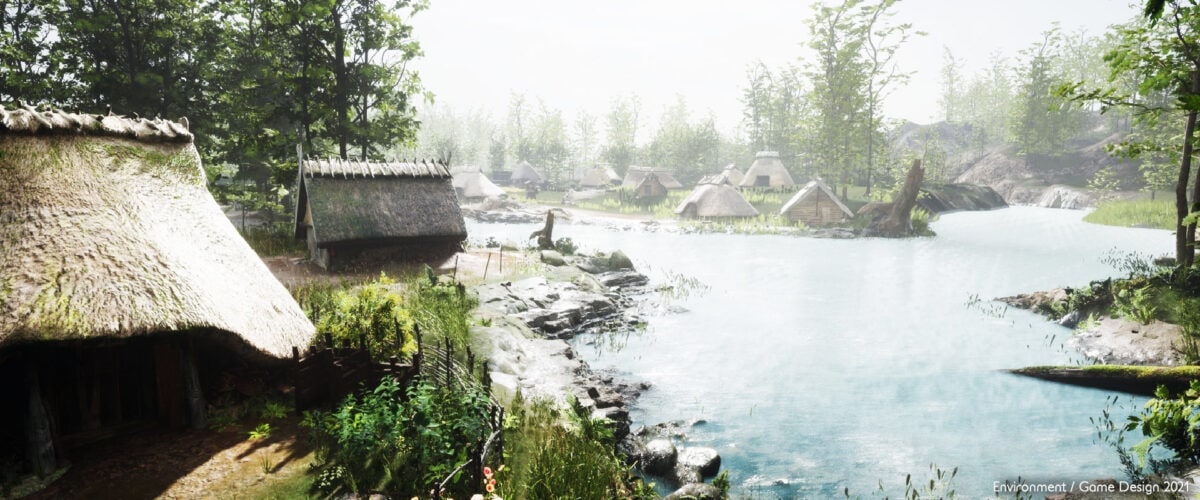
HTW Medieval Village – Unreal 5 Levelart and Environmentdesign
QUICK SUMMARY:
Project – Unreal 5, three week game jam in a group of five students.
Details – We partnered with the historical village „Düppel“ to create a highly detailed level inside the newly released Unreal 5. We used Quixel assets and photoscans of the houses, sculpted the landscape and painted the textures via OpenLand.
What I have done – Level Design, Concept and Planning, IT, Shaders
The project is divided in two parts – the presentation in the first half (with renderings and videos) and a workflow breakdown in the second half.

I. Renderings And Presentation
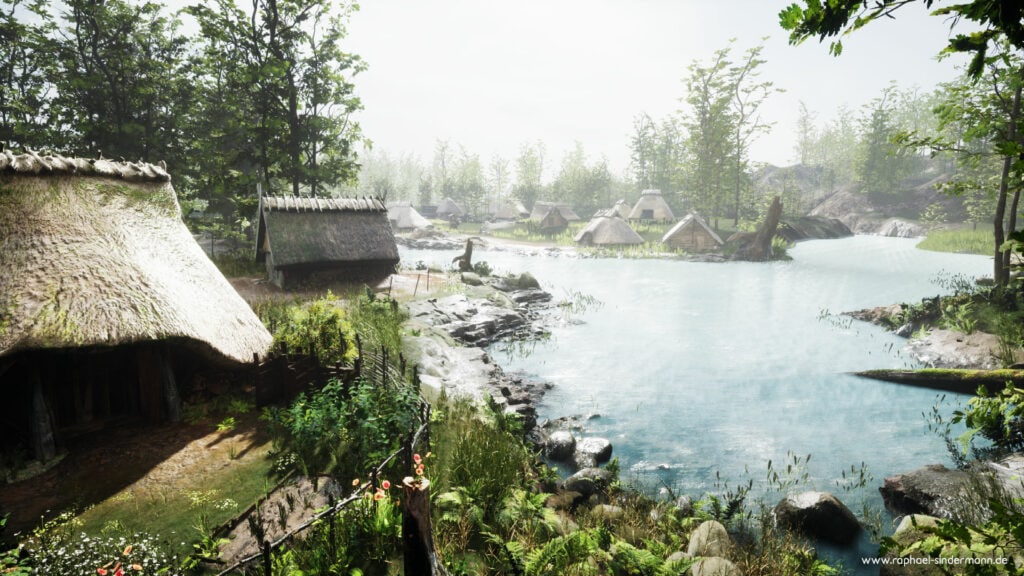
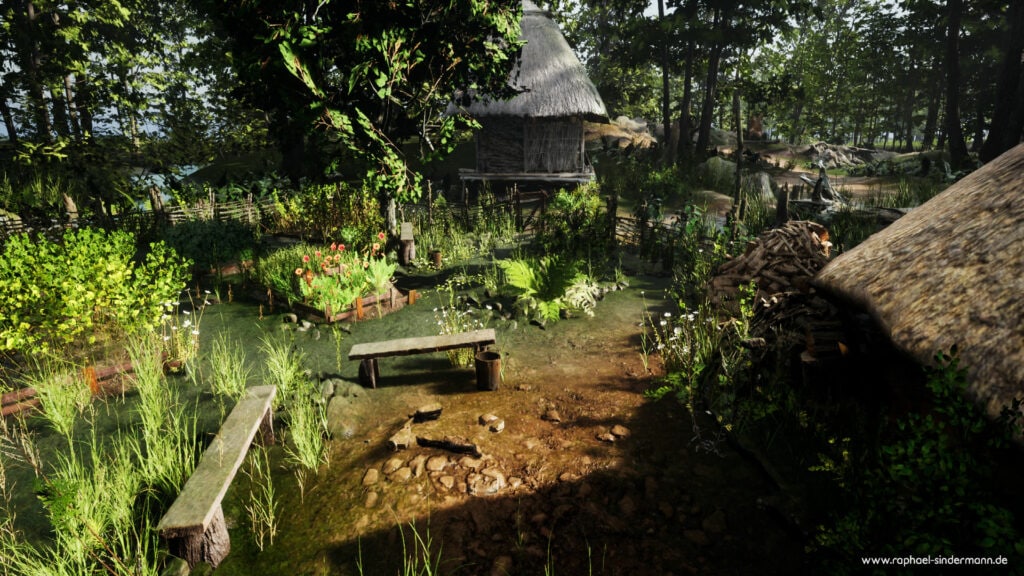
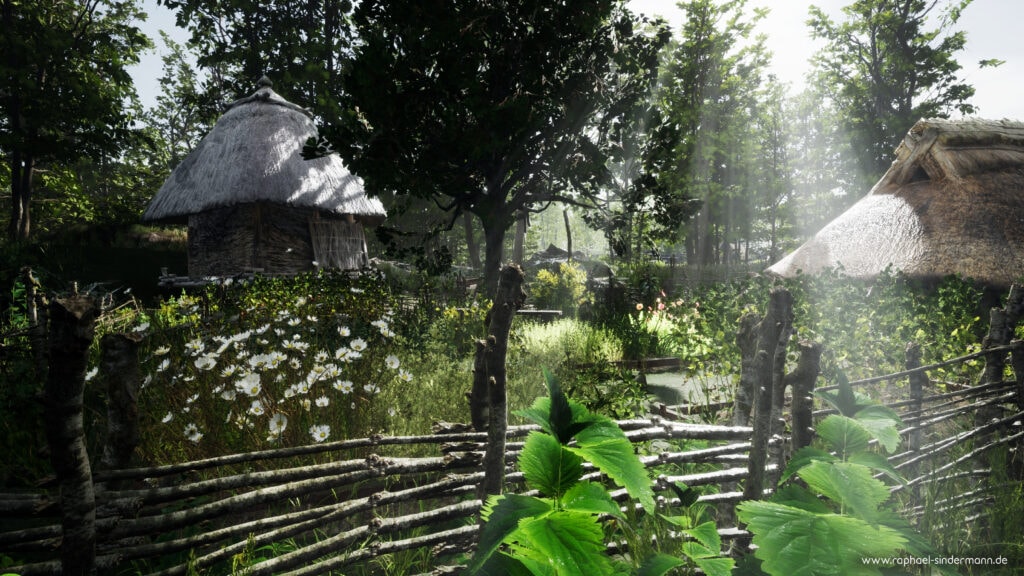
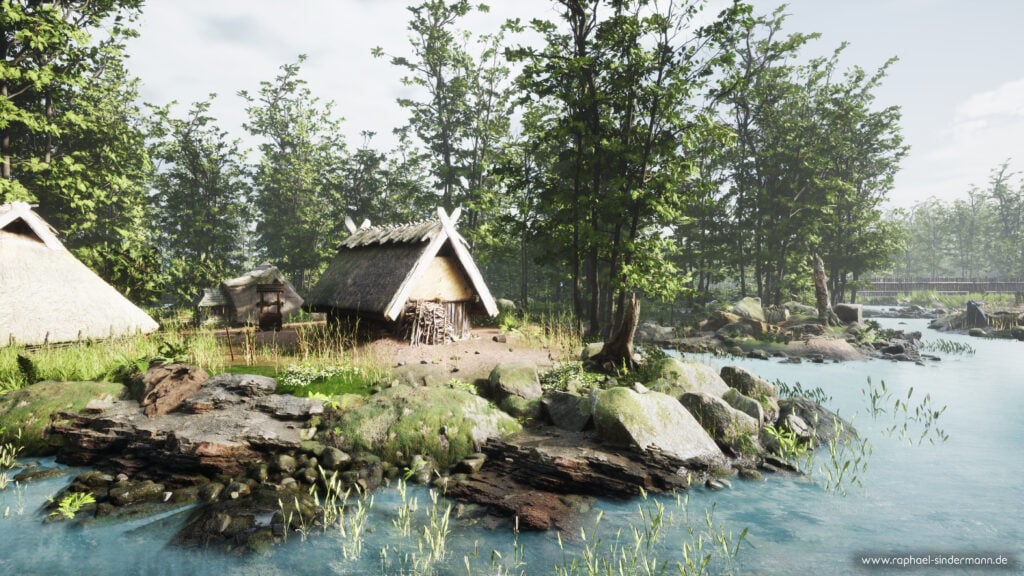

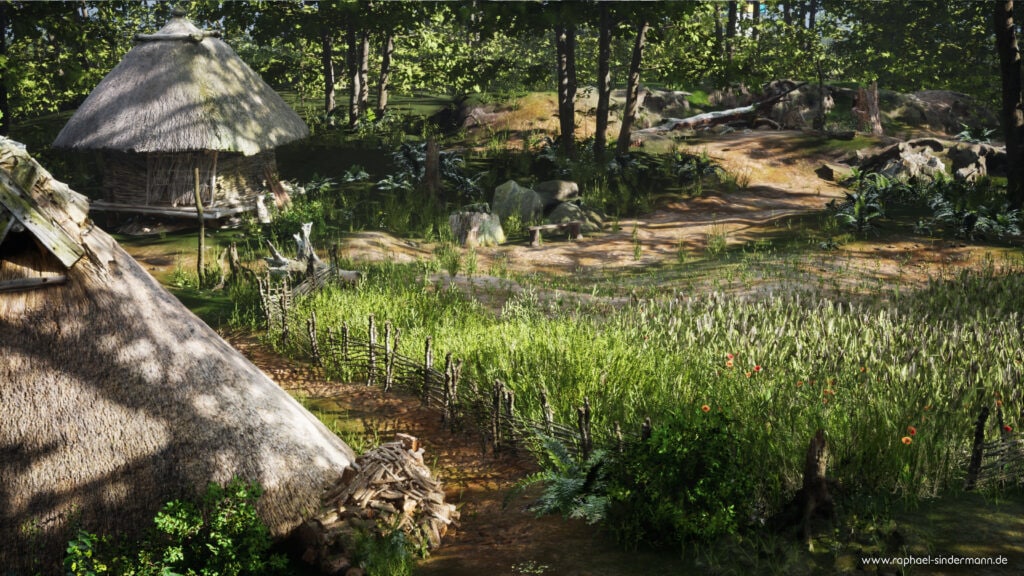
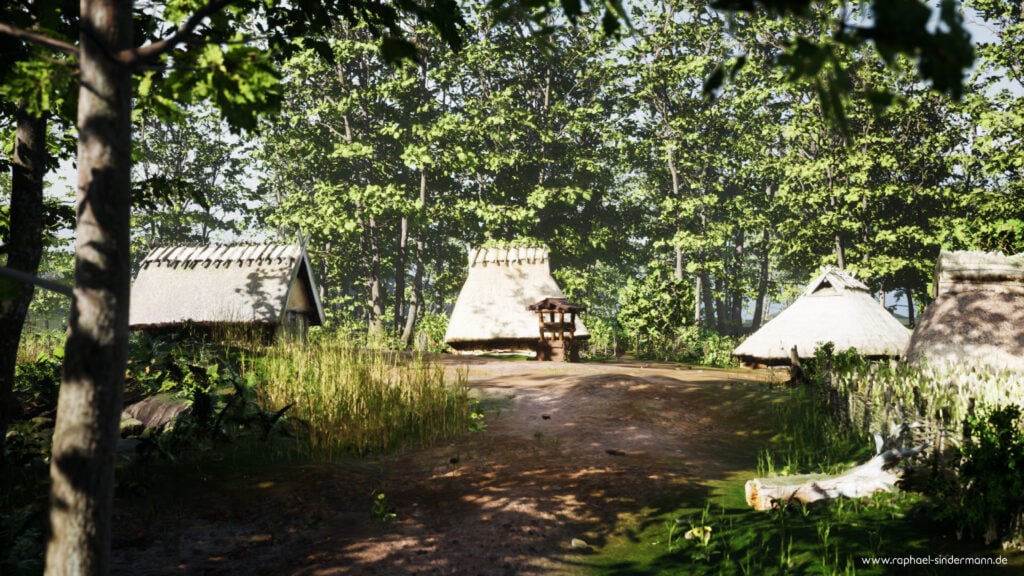
As part of a three-week game jam we worked on a highly detailed environment in the newly released Unreal 5.
We collaborated with „Museumsdorf Düppel“ a historical recreation of a medieval village in Germany and were able to use the scanned house assets as center points in the scene. You can find their website here:
Extensive research went into the design of the landscape. We needed to understand how the people were able to construct their villages inside such harsh environmental conditions. And we wanted to push the limits of digital level creation.
II. The Blockout And Concept
The whole landscape was supposed to be highly detailed – but also fun to walk arround in. That is why we went into extensive research to truly capture the unique feel that such a place emits: we researched how villagers build their houses, with what materials and in what ways they constructed them, what kind of soil they used to grow crops or with what tools they worked the swampy wet earth – and how they adapted towards these harsh living conditions.
A good resarch was needed to fully explore the options we had to create this level. We decided to go with Unreal 5 due to the newly integrated Nanite feature. This made working with extremely high resolution photoscans of the original Düppel houses a breeze.
My workflow usually also includes the making of some concept paintings and thumbnails- but time was of the essence. For three weeks we had the following plan:
- Week = Concept and Blockout
- Week = Setting up the scene in Unreal 5 and getting a foothold in the program (since this was the first time working in Unreal)
- Week = Sweetening and Finalization
Thus I ended up with only a few sketches and some quick concepts to get my mind into the flow of the project and communicate certain ideas.
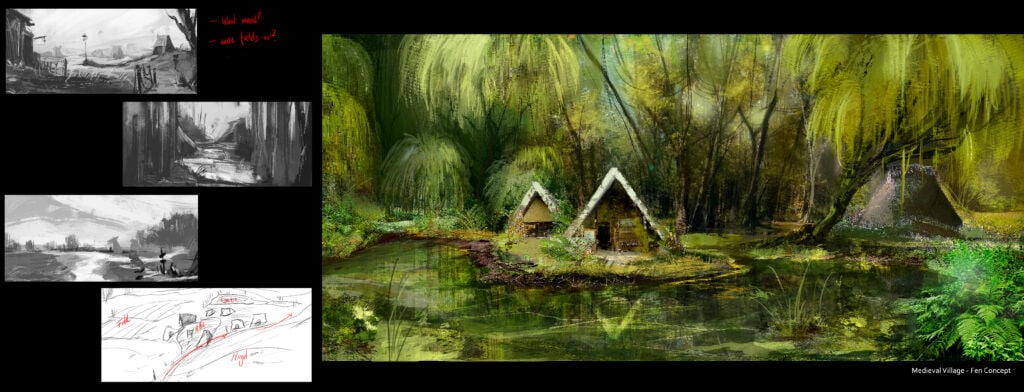
But having knowledge of the area and where things are supposed to grow is not enough for a game-suited environment. There are certain key elements to keep in mind when creating the „fun“ in such a walking simulator.
I worked out a concept that included a player starting position, landmarks, POI’s (Points Of Interestest), and walkways. Sometimes it’s important to lead the player and build tension – and then release it via an important spot or a landmark.
This was implemented with having the player start inside the forest. The player has to walk towards the village which then opens up and reveals the shoreline. From a vary narrow view (somesort of tunnel) we organically broaden the area for the player and introduce a completely new look. You can see how the final version differs from our inital plan but the view lines and the way we introduce the landscape planes stayed the same.

III. Workflow
With the basic idea of our landscape layed out it was time to breath some life into our blockout. Since Unreal 5 EA natively doesnt support tesselation anymore we decided to work with OpenLand (You can find the Link in the video description – the dev updates the plug in very often and the documentation made it very comfortable to use) to create the materials and paint the textures –
Adapting to new ideas and changes made to the landscape came naturally with five teammembers giving input. The blockout was there to provide the inital spark but it had to evolve over time.
I worked not only as a concept designer, but also was responsible for the „technical“ side of things – which meant setting up the perforce server so we could work on the shared scene from our home offices. Besides that, I worked as an artist on the scene itself, building up the forest and shoreline and overall shape of our landscape.
This project was created in the fourth semester at the HTW Berlin 2021.